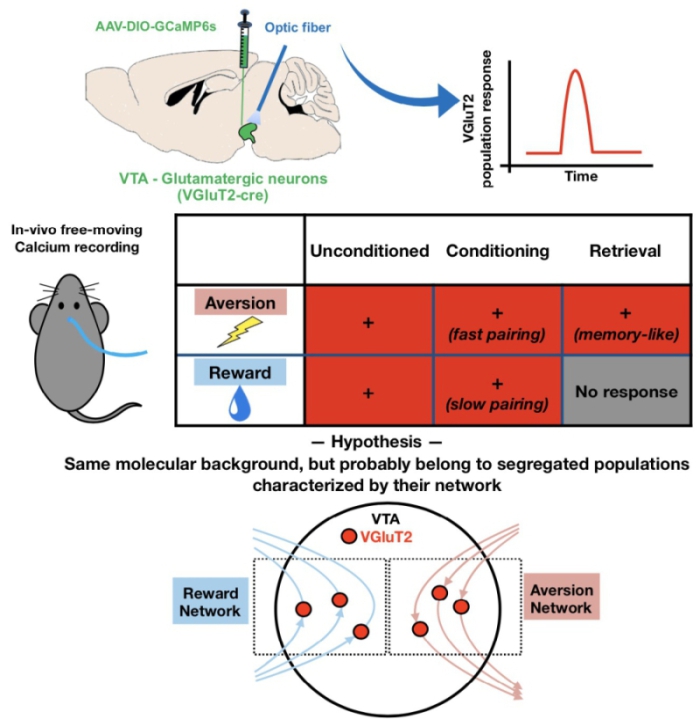
The VTA (Ventral Tegmental Area) is a midbrain structure well known for its role in aversive and rewarding behaviors, but little is known about the role of VTA glutamatergic (VGluT2) neurons in these functions. Direct activation of VGluT2 soma evokes rewarding behaviors, while activation of their downstream projections evokes aversive behaviors.
To answer this paradox, Prof. WANG Liping's group from the Shenzhen Institutes of Advanced Technology (SIAT) of the Chinese Academy of Sciences used in-vivo free-moving calcium imaging by fiber photometry in VGluT2-cre mice to investigate how the VTAVGluT2+ neuronal population was recruited by unconditioned\conditioned aversive and rewarding stimulation.
Their results revealed that, as a population, VTAVGluT2+ neurons responded similarly to unconditioned-aversive and unconditioned-rewarding stimulation.
In the following memory test, the mice were exposed either to a reward conditioning or to an aversive conditioning. The group demonstrated that VTAVGluT2+ response got strong only in the case for aversive memories, not for rewarding memories.
These results, in addition with a precise brain mapping work, suggested that VTAVGluT2+ neurons responding to reward or aversive conditioning may belong to different subpopulations characterized by their associated network.
The study published in Science Bulletin, provided a new vision of appetitive and aversive network, and demonstrated that the neurons molecular background is not the sole or the only key to understand a behavior.

Montardy et al. characterized two subpopulations of VTAVGluT2+ neurons responding differently to aversive and rewarding stimulation. (Image by LIU Xuemei)

86-10-68597521 (day)
86-10-68597289 (night)

52 Sanlihe Rd., Xicheng District,
Beijing, China (100864)

